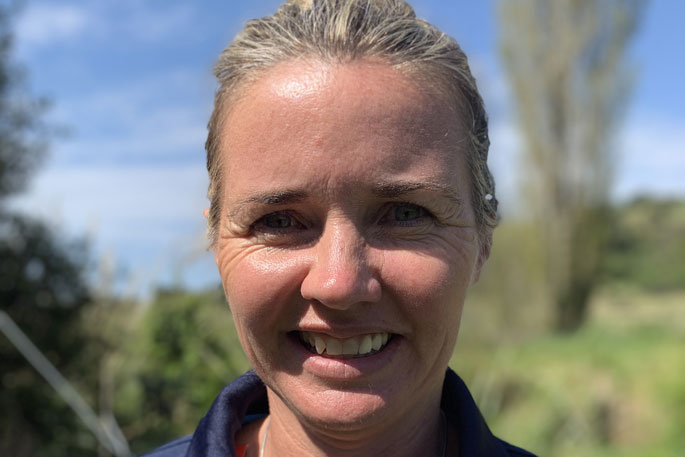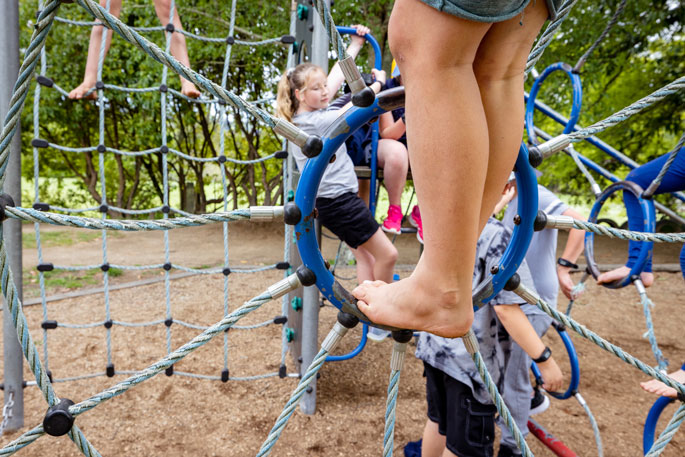"It's time to get serious about play."
This is the message from Sport Bay of Plenty's Heidi Lichtwark.
Below, Heidi writes in response to a recent play survey in the Bay of Plenty conducted alongside Sport New Zealand showing how play has changed over time, and the perceived barriers to play today.
It's amazing the level of nostalgia that comes through when you talk to adults about their childhood play experiences.
Often they'll remember a favourite tree that they climbed, a 'secret' part of a backyard or neighbourhood that unlocked collective imaginations, or laugh about a risky activity that they managed to pull off, either unscathed or with a few battle scars.
We all value those childhood experiences, but too often as adults we dismiss play as a frivolous activity for children.
As a result, we fail to acknowledge the importance of play and instead impose adult priorities and perspectives on today's play experiences.
A fundamental part of childhood
Play is a fundamental building block to physical activity. Part of the magic of play is that it has no pre-determined outcome – it's simply a chance for children to have fun in a way that is enjoyable to them.
Throughout our childhood play we build the skills, competencies and attitudes that we need to be active for life. Through play we develop confidence and social skills, learn how to negotiate, build resilience, get creative and innovative and interact with the physical environment.
 Heidi Lichtwark.
Heidi Lichtwark.
It's not a frivolous activity we do until we grow up. On the contrary – play is a fundamental part of growing up.
How play has changed over time
In a recent Bay of Plenty Power of Play survey we conducted alongside Sport New Zealand, respondents said they remembered play ‘back in the day' as being about outdoors and nature with little adult supervision. The survey found that social, environmental and physical changes in the region have contributed to how children play today, including:
- More structured play
- The influence of information and technology
- Increased fears around safety and risk
- More supervised play and less roaming
- Increased safety restrictions, rules and regulations
- Fewer opportunities for children to build confidence and skills
- Lack of time due to busy schedules.
Play is threatened by adult perspectives and priorities when, ironically, there's an increasing understanding that play should be personally directed with limited or no adult involvement. The best way for adults to get involved is to be enablers of play.
Enabling play
So how, as adults, do we enable play rather than impose our adult selves onto a crucial childhood experience?
The Power of Play survey identified some advantages we have in the Bay of Plenty when it comes to supporting play:
- Our outdoor natural spaces are special and unique to our region
- The celebration of Te Ao Māori is evident across the rohe, with iwi and collaborative initiatives provided for communities
- There's a good level of stakeholder commitment to improve opportunities for play.
To get the most from these advantages we need to acknowledge the importance of play and start to view it from a child's perspective.
Do we give our kids enough time to play, do we let them experiment and take risks, do we provide the space to play, and do we let kids play in their own way without constant adult supervision and intervention?
There's also work to be done at a much wider community level. To understand this, it's worth thinking about how children may experience our neighbourhoods. Is there space to play? Is it encouraged or restricted across our neighbourhoods? Can children easily access play spaces, or are they forced to cross busy roads?
In 1978 the British writer Colin Ward said: 'The failure of the urban environment can be measured in direct proportion to the number of playgrounds.”
Ward believed people should be able to play everywhere, easily, loosely, and not forced into a playground or park. It's a radical idea when you look at how urban environments are structured these days.
At a very basic level, we think houses exist to provide shelter, streets facilitate the movement of motor vehicles, sportsgrounds exist for sport, shops support commerce and retail. Playgrounds exist for play.
The relegation of play to specific, hyper-designed areas is a double-edged sword. In one sense, playgrounds are an acknowledgement of the needs of young children in our neighbourhoods. In another sense, playgrounds suggest play can only happen in certain areas, in a certain way and at certain times.
By it's very definition, though, play is intrinsically motivated, spontaneous and able to happen anywhere.
Across the world we're starting to see the ‘one space, one activity' planning model evolve into something much more innovative and creative.

Parking spaces and streets are being converted to informal play spaces when not required by cars, footpaths are taking on a playful presence as people chalk hopscotch and other games into the pavement and community play libraries are popping up.
Tackling play at a more strategic level is key if we want to develop the kind of neighbourhoods in which kids can flourish. We already see this with the way councils plan and support sport and active recreation.
We're now starting to see councils across the Bay of Plenty include play in the mix as they look to develop a singular play, active recreation and sport strategy.
With this approach we can be much more holistic about how we support physical activity and wellbeing for all ages in our communities.
It really is time to get serious about play.



0 comments
Leave a Comment
You must be logged in to make a comment.